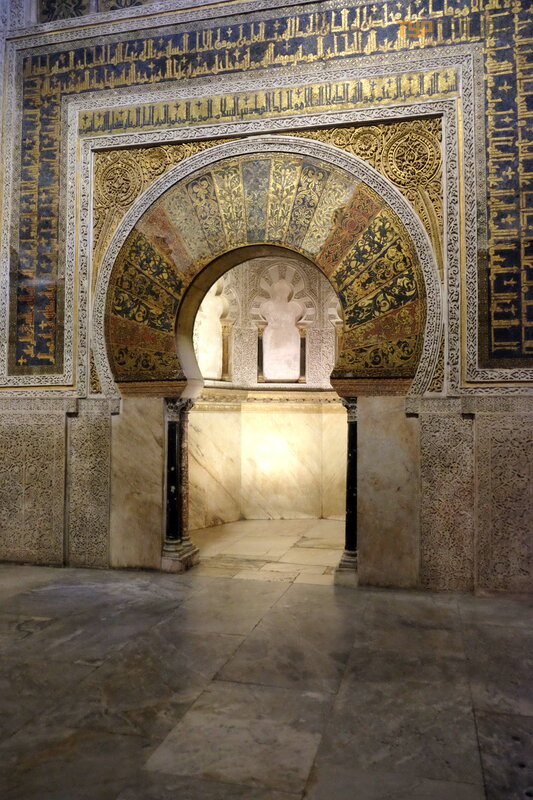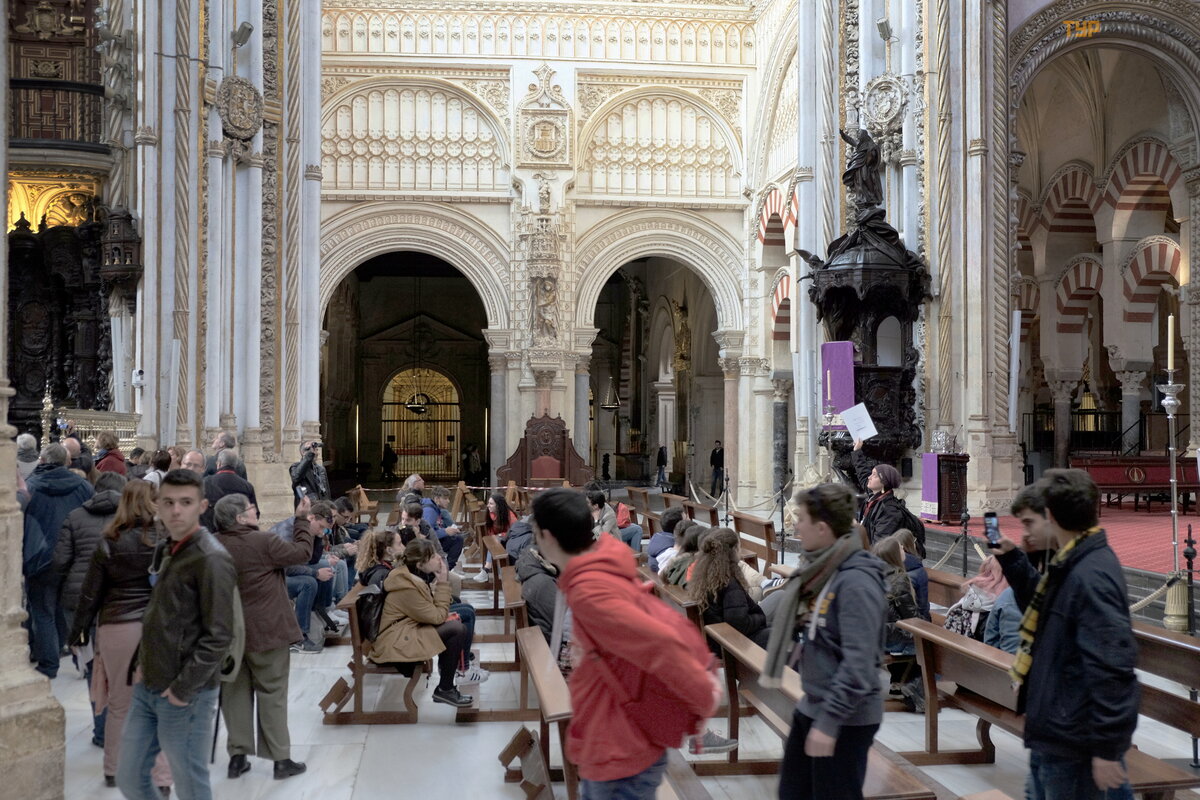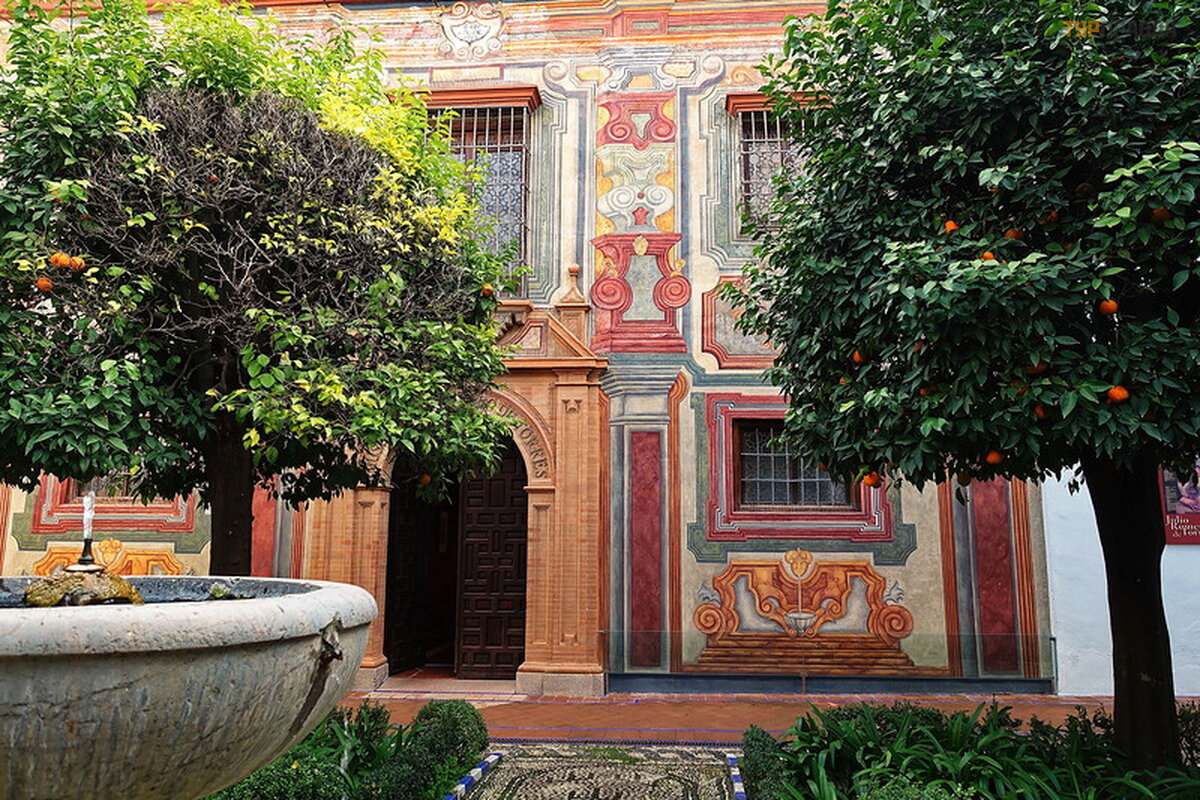And again Spain. Part 2

To be continued. Start here >>>
Day 3
In the morning we left Zaragoza for Madrid. Immediately I will remove the questions on our guide. As a general rule, the bus guide is not allowed to lead excursions in cities, this must be done by local licensed guides, even if they do not speak the language spoken by the group (in this case, our guide acts as an interpreter). This is closely monitored in the cities. The task of the guide along the route: to bring to the hotel, accommodate, feed, organize sanitary stops . . On the bus, the guide can talk about anything. In Barcelona and some other cities, the tour was conducted by our guide Kirill literally on the go, i. e. he talked about the sights into the microphone, and we walked and listened in the headphones, i. e. there were no formal signs of the tour (this is such a trick).
Madrid met us with a drizzle,
the bus stopped in the underground parking just under the royal palace and the group went to the survey. Then they very wisely decided not to check into the hotel right away (so as not to waste time), and after the tour, give free time and gather at the Prado Museum at 20-00.
On our last trip (two years ago) there was a huge queue at the royal palace, and today it may have scared the rain, it may not be the season, but there were practically no people for tickets. My wife and I, and several other people from the group, did not miss this opportunity and separated from the group and headed to the palace.
On the square in front of the palace, the Cathedral of Almudena
The palace itself was reluctant to shoot in the rain, so I'll insert a photo from two years ago. You can see what the line was.
A visit to the palace - 10 euros, there is an audio guide in Russian.
Inspection of things is cleaner than at airports. The 18th century palace itself is huge, located on a hill in a very beautiful place, the palace is surrounded by gardens. Only part of the premises is available for visiting. One minus - prohibit photos and videos. That's why I'm posting pictures from the internet.
This is the armory
Halls of the palace
The collection also includes a quartet (two violins, a viola and a cello) of Stradivari instruments
After visiting the palace, we walked around Madrid, the rain subsided, on Gran Via we went to a large inexpensive Primark department store to buy something for our granddaughter as a gift.
Then we quietly headed to the Prado, free admission to the museum from 18-00. but I still had to queue
We pass through the central square of Puerto del Sol, with a monument to Charles III and with the symbol of Madrid - a she-bear with a strawberry tree.
It takes about twenty minutes to walk from Puerto del Sol to the Prado Museum.
We pass the famous Neptune Fountain, the gathering place for Atlé tico Madrid fans. Real Madrid fans celebrate victories at another fountain - "Sibiles (Kibily)"
And now the museum itself. Every visit brings new sensations, this time we spent a lot of time on the works of El Greco, Velá zquez and Murillo.
In the evening we checked into the Silken Torre Garden Hotel, where we stayed during our first trip to Spain 9 years ago. I must say that the breakfasts at the hotel have changed for the better, besides, a metro station has opened nearby, a large shopping center with a large Carryfur supermarket is nearby, where we stocked up for dinner.
Fourth day
In the morning we set off for Toledo. The weather was sunny, but cold and windy. (We must not forget that Madrid is located at an altitude of almost 700 meters above sea level). We visited Toledo 9 years ago, I will never forget the admiring "Ah! " of the whole group at the sight of the most beautiful panorama of the city.
The city of Madrid received a special status, while Toledo remained the capital of the province of Castile-La Mancha. The city is included in the UNESCO heritage, founded BC. e. and until 1561 it remained the residence of the kings of Xtilia, until the capital was moved to Madrid.
When traveling around the city, it seems
that he fell into the Middle Ages, similar feelings arose when visiting the Italian Siena.
Then we visited the Church of Sao Tome (entrance 6 euros), which is famous for the fact that there is a masterpiece of world art - El Greco's painting "The Burial of Count Orgaz", which for 400 years has never left the walls of the church. I must say that this great artist, although he did not achieve favor and orders from the Spanish King Philip II, earned great honor and respect in Toledo, he worked in the city until his death and was buried there. In Toledo, El Greco worked a lot and successfully, he was a fairly rich man,
rented a 24-room house. When painting the painting "The Burial of Count Orgaz", the artist arranged something like an auction among the noble citizens of the city for the right to be captured in the picture. The artist depicted himself as the seventh from the left in the top row (above the raised hand), the boy below is his son. You can’t shoot in the church, the picture is from the Internet.
Church outside (with three arches)
And this is the house-museum of El Greco, where he lived
Then we were given some free time for lunch, etc. The women went to buy jewelry made in the Damascus jewelry technique, which Toledo is famous for. The meaning is that a pattern is cut out in copper or steel jewelry, and thin gold or silver threads or plates are manually applied there. Toledo is also famous since ancient times for its blades,
Since the last trip, we have been using a good Toledo knife in our kitchen. At an early time, many arms shops were closed, and open prices did not please, probably, inflation also plays a role. In 2009 the knife cost 10 euros, now the same one costs twice as much. But we in the cafe enjoyed the famous Toledo marzipans, the recipe of which has not changed for 500 years.
After having a snack, we examined Khuderia - the medieval Jewish quarter. According to legend, the Jews moved to Spain after the destruction of Jerusalem by the Romans. The Jewish quarter became the richest in the city, there were 11 synagogues on its territory, the Spaniards did not like the prosperity of the Jews, they were heavily taxed, and then, after numerous persecutions with victims, in 1492 the Jews were expelled from Spain.
Jewish Quarter
Unfortunately, there was very little free time left and the group did not see the amazing Toledo Cathedral of the 13th-15th centuries. I visited this cathedral 9 years ago. In my opinion, this is the most beautiful cathedral in Spain, and I have seen almost all the significant Spanish cathedrals. You could only admire the outside. And here is the amazing interior decoration and the picture gallery in Sancristia with paintings by El Greco, Caravaggio, Titian, Velazquez, Raphael.
Of course, you need to spend at least half a day in Toledo, and a day is even better, but the tour program is designed so that a long journey to Andalusia awaited us and we returned to the bus along the 13th century St. Martin's Bridge
Our path lay in the province of Castile-La Mancha, where many things remind of Don Quixote. Here is one of the roadside restaurants where we stopped
At 17 o'clock we arrived in Cordoba (in Spanish Cordoba), the city was already preparing for the Holy Week with might and main, platforms and stands for spectators were being erected. The city was founded by the Phoenicians, then it was captured in 206. BC e. the ancient Romans, then in 711 the city, like all of Spain, was captured by the Moors. By the 10th century, the population of the city reached 400 thousand people, it was the largest and most developed city in the world, the city was called the "abode of science", because almost the entire population was literate, 800 schools and 70 libraries worked. After the "reconquista", i. e. , the liberation of Spain from the Arabs in 1236, Muslims were expelled from the city, scientists, merchants, and artisans left. The city gradually fell into decay and the population decreased to 20 thousand by the 18th century.
only since the 19th century began the rise and now the population is more than 300 thousand. The city stands on the Guadalquivir River, across which the Roman bridge is thrown, built before our era, restored in the 10th century.
The bridge leads to the 16th century gate of Puerto del Puente
And this is the 27-meter column of the Triumph of the Archangel Raphael. According to legend, the archangel Raphael saved the city from the plague and became the patron saint of Cordoba.
In Cordoba, there are about 10 columns of St. Raffil, the highest is at the top of the tower of the cathedral, the sculpture of the archangel was erected in 1768 by the sculptor Veridier.
The main attraction of Cordoba is the legendary Mesquita. I will say right away that Mesquita made the greatest impression on me in Andalusia. Let me remind you that Spain was under the control of the Arabs for more than 700 years.
In the Middle Ages, it was the second mosque in the world after Mecca. The construction of the mosque began in 785 by Emir Abdurakhman 1, later the mosque was repeatedly expanded and reconstructed. The main hall of the Mezquita is striking, with numerous rows of columns and arches made of marble, jasper and onyx. More than 800 columns are now preserved in Mesquite.
It is interesting that the mihrab (a niche in the wall where Muslims turn during prayer) is oriented not to the East, but to the south.
After the expulsion of Muslims from the city, the mosque was converted into a Christian temple,
and the minaret was turned into a bell tower. And in 1523, with the permission of King Charles V, they began to build a Christian cathedral inside the former mosque. Interestingly, when the king visited Mezquita, he said that he would never have agreed to the construction of the cathedral if he had seen the mosque before: "You built what can be built anywhere, and destroyed what was the only one in the world. " The cathedral was built in the Gothic style, with further additions in the Baroque style. The cathedral also has something to see: mahogany choirs, richly decorated chapels.
The treasury of the cathedral contains the most valuable things, including the tabernacle of the body of Jesus,
"Ark Arfe" (in the form of a Gothic cathedral) created by Enrique Arfe for six years (1510-1516) from gold and silver. The height of the masterpiece is about two meters, every year since 1518 it has been taken out on the Day of the Body and Blood of the Lord to participate in the procession.
Other Treasures of the Cathedral
Courtyard
In general, today it is a unique symbiosis of Christian-Muslim culture, although, as we were recently explained, two hundred Muslims tried to arrange a prayer service, but were straightened out by the police.
The city itself made a very pleasant impression with its white streets, planted with flowers, beautiful courtyards. The weather was warm, plants were blooming, there were oranges on the trees.
On the way, we often came across smartly dressed children with their parents, as they explained to us, this is the feast of their first communion.
Cordoba also has Juderia - the Jewish Quarter. Jews moved here before our era,
after the destruction of Solomon's temple by the Romans. I must say that during the reign of the Arabs in Spain, they were very tolerant of other religions (in contrast to Christianity with the Inquisition). Arabs, Jews and Christians lived peacefully in Có rdoba, although Jews were forbidden to have land allotments and they lived and worked in cities. The Jewish community of Có rdoba was the largest in Spain. now in Juderia there is one of the three synagogues that have been preserved in their original form in Spain. In the 12th century, the great scientist, philosopher, doctor Rabbi Maimonides, the spiritual leader of the Jews, lived and worked here.
The famous Seneca, whose monument stands at the city gates, was also a native of Cordoba.
Today was rich in travel, because we still had to overcome the long way to spend the night in Seville.
Continued here >>>







































































































































































